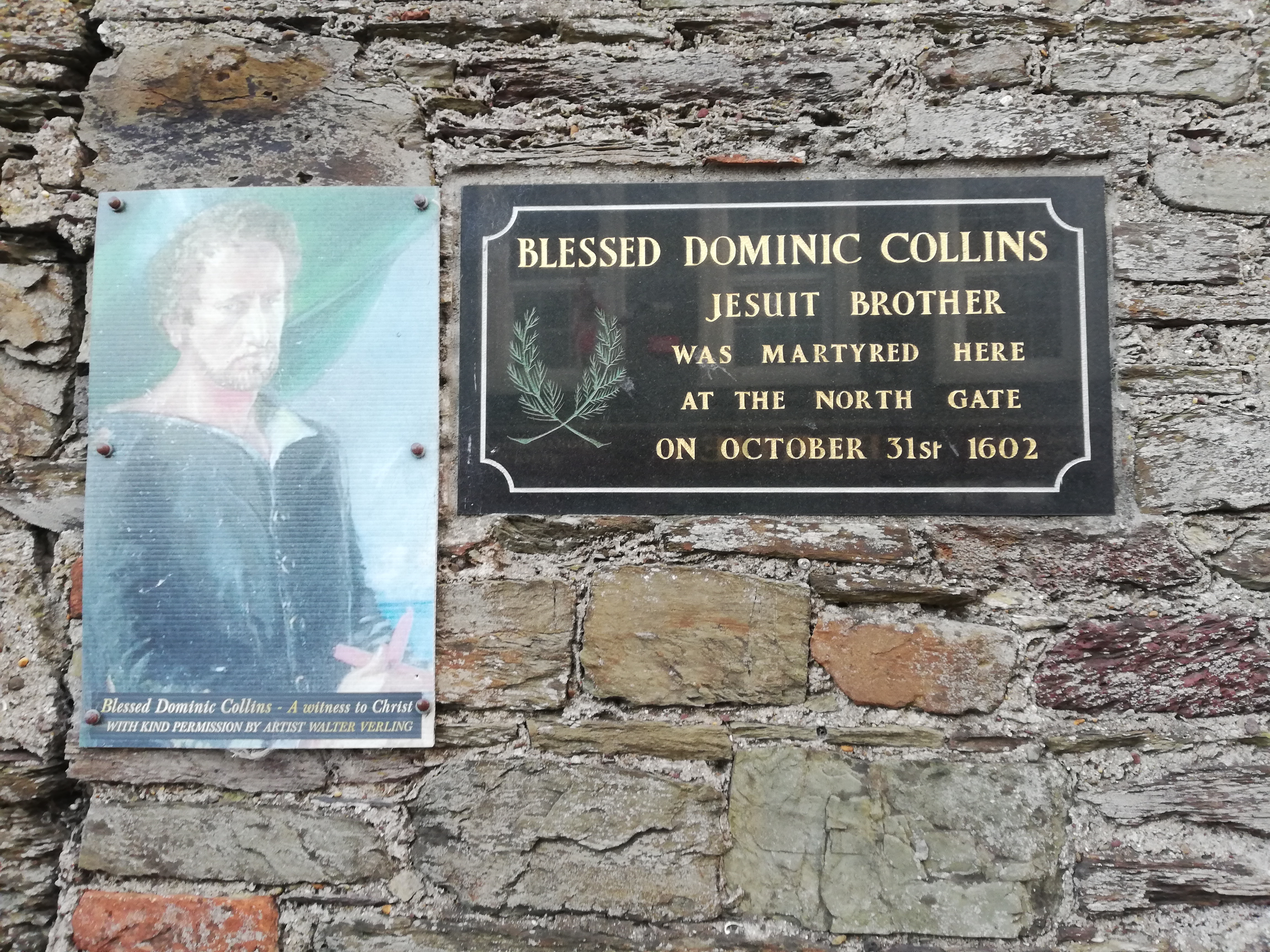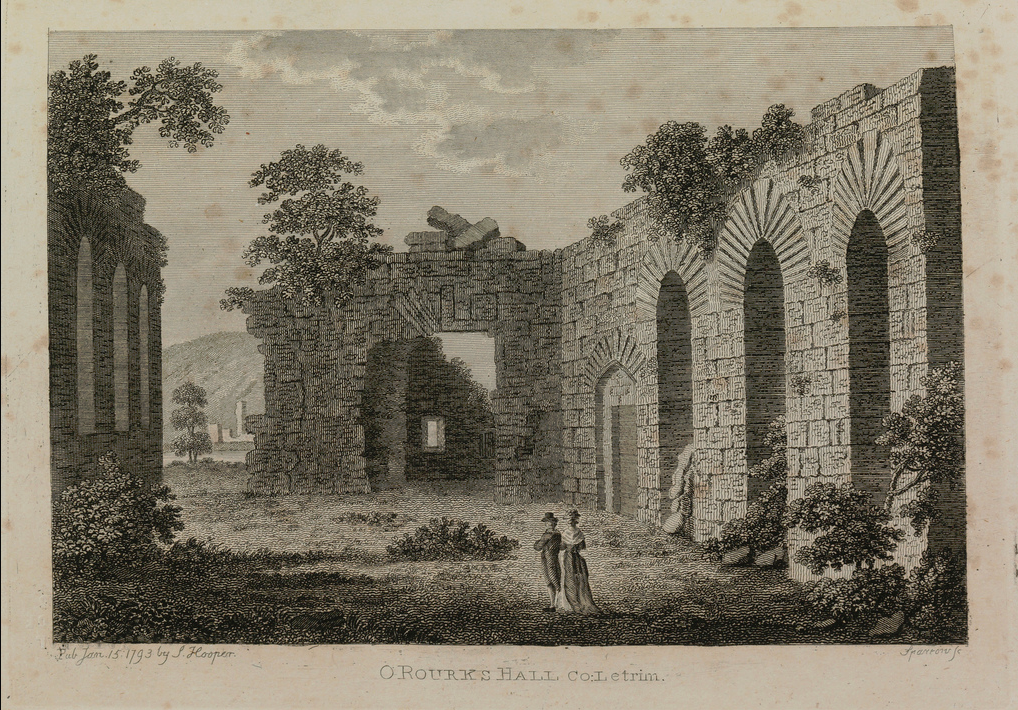|
Siege Of Dunboy
The siege of Dunboy took place at Dunboy Castle between 5 June and 18 June 1602, during the Nine Years' War in Ireland. It was one of the last battles of the war. An English army of up to 5,000 under Sir George Carew besieged the castle, which was held by a Gaelic Irish force of 143 loyal to Donal Cam O'Sullivan Beare. The English took the castle after eleven days and hung the majority of captured prisoners. The English also captured a fort on nearby Dursey Island. Background Dunboy Castle is near the town of Castletownbere, on the Beara Peninsula in south-western Ireland. It was a stone tower house, built to control and defend the harbour of Bearhaven, which was a stronghold of Donal Cam O'Sullivan Beare, a Gaelic leader and the 'Chief of Dunboy'. O'Sullivan was part of an alliance of Gaelic leaders who had taken up arms against the English government in Ireland. He was helped by King Philip III of Spain, who sent an invasion force to Kinsale under the command of Do ... [...More Info...] [...Related Items...] OR: [Wikipedia] [Google] [Baidu] |
Nine Years' War (Ireland)
The Nine Years' War, sometimes called Tyrone's Rebellion, took place in Ireland from 1593 to 1603. It was fought between an Irish alliance—led mainly by Hugh O'Neill of Tyrone and Hugh Roe O'Donnell of Tyrconnell—against English rule in Ireland, and was a response to the ongoing Tudor conquest of Ireland. The war was fought in all parts of the country, but mainly in the northern province of Ulster. The Irish alliance won some important early victories, such as the Battle of Clontibret (1595) and the Battle of the Yellow Ford (1598), but the English won a victory against the alliance and their Spanish allies in the siege of Kinsale (1601–02). The war ended with the Treaty of Mellifont (1603). Many of the defeated northern lords left Ireland to seek support for a new uprising in the Flight of the Earls (1607), never to return. This marked the end of Gaelic Ireland and led to the Plantation of Ulster. The war against O'Neill and his allies was the largest conflict fought ... [...More Info...] [...Related Items...] OR: [Wikipedia] [Google] [Baidu] |
Dominic Collins
Dominic Collins (; 1566 – 31 October 1602) was an Irish Jesuit lay brother, an ex-soldier, who died for his Catholic faith. He was beatified as a martyr by Pope John Paul II on 27 September 1992. Life Collins was born in 1566 of a prominent merchant family in Youghal, County Cork, in the Kingdom of Ireland, His father and brother both served as mayors of the town. In 1586 he went to Nantes, France, where he worked for three years as a servant in various hostelries in Brittany, to acquire a horse and to join the cavalry. In 1589 he joined the forces of the Catholic League led by Philippe Emmanuel, Duke of Mercœur, at war against the Huguenots of Brittany. He was soon promoted to the rank of captain (under the name of ''La Branche''), and was appointed military governor of territory taken from the Huguenots. Collins went to Spain with a letter of recommendation for King Philip II, whose service he entered. He transferred to the Spanish army and was stationed in the garrison ... [...More Info...] [...Related Items...] OR: [Wikipedia] [Google] [Baidu] |
Conflicts In 1602
Conflict may refer to: Arts, entertainment, and media Films * ''Conflict'' (1921 film), an American silent film directed by Stuart Paton * ''Conflict'' (1936 film), an American boxing film starring John Wayne * ''Conflict'' (1937 film), a Swedish drama film directed by Per-Axel Branner * ''Conflict'' (1938 film), a French drama film directed by Léonide Moguy * ''Conflict'' (1945 film), an American suspense film starring Humphrey Bogart * ''Catholics: A Fable'' (1973 film), or ''The Conflict'', a film starring Martin Sheen * ''Judith'' (1966 film) or ''Conflict'', a film starring Sophia Loren * ''Samar'' (1999 film) or ''Conflict'', a 1999 Indian film by Shyam Benegal Games * ''Conflict'' (series), a 2002–2008 series of war games for the PS2, Xbox, and PC * ''Conflict'' (video game), a 1989 Nintendo Entertainment System war game * '' Conflict: Middle East Political Simulator'', a 1990 strategy computer game Literature and periodicals * ''Conflict'' (novel) ... [...More Info...] [...Related Items...] OR: [Wikipedia] [Google] [Baidu] |
Hugh O'Neill, Earl Of Tyrone
Hugh O'Neill (Irish: ''Aodh Mór Ó Néill''; literally ''Hugh The Great O'Neill''; – 20 July 1616), was an Irish Gaelic lord, Earl of Tyrone (known as the Great Earl) and was later created ''The Ó Néill Mór'', Chief of the Name. O'Neill's career was played out against the background of the Tudor conquest of Ireland, and he is best known for leading a coalition of Irish clans during the Nine Years' War, the strongest threat to the House of Tudor in Ireland since the uprising of Silken Thomas against King Henry VIII. Family background and early career Hugh O'Neill came from a line of the O'Neill dynasty—derbfine—that the English authorities recognized as the legitimate successors to the Chiefs of the O'Neills and to the title of Earl of Tyrone. He was the second son of Matthew O'Neill, also called Feardorach, reputed illegitimate son of Conn, 1st Earl of Tyrone. Shane O'Neill, a legitimate son of Conn O'Neill, employed the ambivalent ... [...More Info...] [...Related Items...] OR: [Wikipedia] [Google] [Baidu] |
West Breifne
The Kingdom of West Breifne (Irish ''Breifne Ua Ruairc'') or Breifne O'Rourke was a historic kingdom of Ireland that existed from 1256 to 1605, located in the area that is now County Leitrim. It took its present boundaries in 1583 when West Breifne was shired and renamed Leitrim, after the village of Leitrim, which was an O'Rourke stronghold. The kingdom came into existence after a battle between the ruling O'Rourke clan and the ascendant O'Reillys caused the breakup of the older Kingdom of Breifne and led to the formation of East Breifne and West Breifne. The kingdom was ruled by the O'Rourke clan and lasted until the early 17th century, when their lands were confiscated by England. Early history Formation In 1172, Tighearnán Ua Ruairc, the longtime Lord of Breifne and Conmaice, was betrayed and killed at Tlachtgha during negotiations with Hugh de Lacy, Lord of Meath. Tighearnán was beheaded, and his head and body was conveyed to the Anglo-Normans in Dublin, where it was p ... [...More Info...] [...Related Items...] OR: [Wikipedia] [Google] [Baidu] |
Dursey Massacre
The Dursey massacre, also called the Dursey Island massacre, took place in June 1602 during the Nine Years' War on Dursey Island off the Beara Peninsula in southern Ireland. According to Philip O'Sullivan Beare, a group of around three hundred Gaelic Irish, including civilians, were killed by an English force under the command of George Carew. Background During the Nine Years' War, a coalition of Irish lords led by Hugh O'Neill revolted against English rule in Ireland. In the southern province of Munster, one of these lords was Donal Cam O'Sullivan Beare who was based in the Beara Peninsula in modern County Cork. After the siege of Kinsale in 1601, O'Sullivan remained one of the few Irish leaders in the region who continued to resist the English Crown. In early 1602, with English forces tightening their control of Munster, O'Sullivan went north to Ulster to consult with O'Neill. In June, an English force attacked Dunboy Castle, one of the more prominent forts in O'Sulliva ... [...More Info...] [...Related Items...] OR: [Wikipedia] [Google] [Baidu] |
Philip O'Sullivan Beare
Philip O'Sullivan Beare ( ga, Pilib Ó Súilleabháin Béirre, 1590–1660) was an Irish soldier who became more famous as a writer. He fled to Habsburg Spain during the time of Tyrone's Rebellion, when Gaelic Ireland was making its last stand against Tudor England. He subsequently authored the book, the ''Catholic History of Ireland'', which offered a history from the perspective of the native Irish Catholics. Biography Philip O'Sullivan Beare was the son of Dermot O'Sullivan and nephew of Donal O'Sullivan Beare, Prince of Beare. The O'Sullivans, headed by the O'Sullivan Beare, owned much of Valentia Island in south-western Ireland. He was sent to Spain in 1602, and was educated at Compostela by Vendamma, a Spaniard, and John Synnott, an Irish Jesuit. He served in the Spanish army. In 1621 he published his ''Catholic History of Ireland'', a work not always reliable, but valuable for the Irish wars of the author's own day. He also wrote a ''Life of St. Patrick'', a confutat ... [...More Info...] [...Related Items...] OR: [Wikipedia] [Google] [Baidu] |
Oath Of Supremacy
The Oath of Supremacy required any person taking public or church office in England to swear allegiance to the monarch as Supreme Governor of the Church of England. Failure to do so was to be treated as treasonable. The Oath of Supremacy was originally imposed by King Henry VIII of England through the Act of Supremacy 1534, but repealed by his elder daughter, Queen Mary I of England, and reinstated under Henry's other daughter and Mary's half-sister, Queen Elizabeth I of England, under the Act of Supremacy 1559. The Oath was later extended to include Members of Parliament (MPs) and people studying at universities. Requirement of the oath began to subside when Catholics were first allowed to become members of parliament in an act in 1829, and the requirement to take the oath for Oxford University students was lifted by the Oxford University Act 1854. Text of the Oath as published in 1535 I (state your name) do utterly testifie and declare in my Conscience, that the Kings Highnes ... [...More Info...] [...Related Items...] OR: [Wikipedia] [Google] [Baidu] |
Castletown Berehaven
Castletownbere () is a town in County Cork in Ireland. It is located on the Beara Peninsula by Berehaven Harbour. It is also known as Castletown Berehaven. A regionally important fishing port, the town also serves as a commercial and retail hub for the local hinterland. Located on the Wild Atlantic Way, tourism is also important to the local economy. The area is the setting for Daphne du Maurier's 1943 novel ''Hungry Hill'' named after the nearby mountain of the same name. History and name The Irish name of the town () originally referred to a MacCarthy dynasty castle which once stood in the area. This should not be confused with Dunboy Castle – two miles west of the town – which was the seat of the O'Sullivan Beare family. Donal Cam O'Sullivan Beare, together with other Gaelic lords and with Spanish aid, rebelled against the English Crown. During the Siege of Dunboy the castle was reduced by the forces of Elizabeth I in 1602. He then retreated with his followers to Leitri ... [...More Info...] [...Related Items...] OR: [Wikipedia] [Google] [Baidu] |
Bere Island
Bere Island or Bear Island (, although officially called ''An tOileán Mór'' meaning "the big island") is an island in Bantry Bay off the Beara Peninsula in County Cork, Ireland. It spans roughly 10 km x 3 km, with an area of 17.68 km², and, as of 2012, had a population of between 210 and 220 people. Legend says that the island was named by a 2nd-century king of Munster, Mogh Nuadat, in honour of his wife, Beara, the daughter of Heber Mór, King of Castile. History Early traces of human occupation include megalithic tombs and standing stones. The island was the property of the O'Sullivan Bere clan and remained so until the power of the Gaelic chieftains was finally broken in 1602. This period also saw the first military interest in the island when Sir George Carew ordered a road to be built across the island to transport the pro-English forces to the Siege of Dunboy. In December 1796, a French fleet entered Bantry Bay and Berehaven Harbour, led by General H ... [...More Info...] [...Related Items...] OR: [Wikipedia] [Google] [Baidu] |







.jpg)